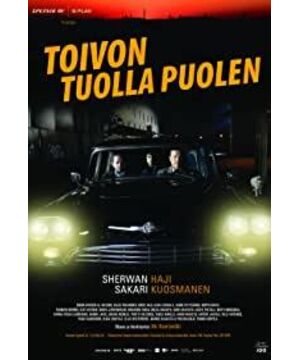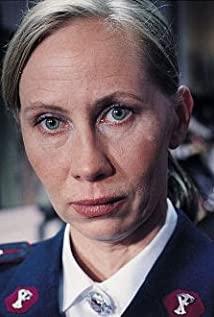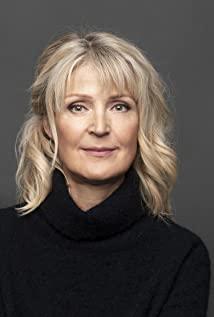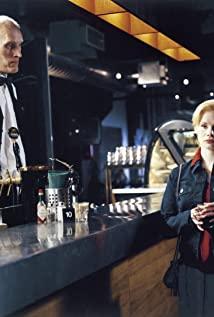People struggle to survive in the world of birth.
——The
other side of Hope, which won the Silver Bear Award for Best Director at the Berlin Film Festival, made many fans eager to see.
Finally, the film is out of resources. The fat brother decisively entered the pit to see it.
The biggest difference between master-level works and regular films is that there will be no deliberate sensationalism, no blatant dazzling skills, and no loud-mouthed themes.
This kind of film will definitely test the fans' initiative to watch the movie, and the way to mobilize your emotions is always subtle and slow.
In a nutshell, "The Other Side of Hope" feels the same as many master films:
no more, no less, neither fast nor slow.
After reading it, it's either bone-chilling or heart-warming.
This time, Aki Kaurismaki presents us with a film that is cold on the outside, warm on the inside, and softens the reality of refugee integration.
Aki Kaurismaki is a Finnish national treasure director, a Nordic writer and producer who is well-known throughout the European film industry. He is an award-winning professional at major European film festivals. It has won three awards at the Berlin International Film Festival. He has appeared in many major European awards.
As a film that has steadily entered the top ten of the year, "The Other Side of Hope" is not proud of its story, but stylized into a variety of cinematic narrative methods.
The story of "The Other Side of Hope" is not complicated, and the main story adopts a two-line cross narrative. The first half takes the two characters as the narrative center, echoing each other, showing the theme and shaping the characters.
One is Khalid, a Syrian refugee.
The country suffered a war, and the family fell apart in an instant, leaving him and his sister alone. In order to escape the war, he found the father of his dead fiancée and borrowed $6,000 to smuggle it all the way. During this time, he lost contact with his sister.
Khalid is a key narrative thread that pierces the theme throughout the film. Through Khalid's perspective, we have an overview of Finland's refugee resettlement policy and selection methods.
From the hero Khalid's initiative to apply for asylum at the police station, life in the refugee camp, a series of interviews and audits, to the final court announcement of whether he is eligible to stay.
We have clearly seen the representation of topics representative of European refugee issues. This allows the audience to quickly understand the most pressing pain point in Europe, the immigration and integration of refugees.
The film hints at a structural arrangement of cross-narratives from the outset.
Khalid smuggled into Finland from the port, and as soon as he walked down the street, he met another hero, Vikstrom, who was driving by.
At the beginning of the film, Wickstrom's identity and current situation are explained. The businessman, just separated from his wife, and like Khalid, will face a huge change in their lives, an unknown challenge.
Wickstrom sold his clothing business at half price, gained a lot of start-up capital in the casino, sold a tepid restaurant, and met some subordinates who needed to be taken care of... ..
The two met again after Khalid was sentenced to be deported and escaped from the resettlement center.
Khalid gave Wickstrom a punch, and the larger Wickstrom responded with a violent beating. Then in the restaurant, he provided a lunch to Khalid, who was living on the street, and generously took him in and gave him a job.
This is the tactic used by Kaurismaki.
The individuals who are difficult to relate to are linked by a coincidental fate, and the two people who are strangers and even hostile actually become friends and finally form an alliance.
There is humor and warmth in this "impossible", which makes the gloomy and gloomy reality a little light.
"The Other Side of Hope" opens with a cross-narrative, and when the two meet, their lives change. This narrative method and the shift of perspective allow us to see the possibility of both sides of the refugee issue.
Many refugee-themed films are one-dimensional, and most of them use the perspective of Europeans to present and solve this problem. They always have a kind of superiority and control, and the refugee's self-consciousness is always absent and changed. subjected to assimilation.
In The Other Side of Hope, Wickstrom acts not as a recipient, but as a buffer point for the refugee acceptance problem.
In Khalid's immigration issue, the story clearly constructs a tripartite character. Refugees represented by Khalid; government agencies and local violent groups to exclude and control refugees; and buffer points represented by Wickstrom.
Through the story, we see the intention of the director, Aki Kaurismaki clearly has sympathy for refugees, he believes that the way the government agencies deal with it, and the local conservative violent elements make the refugee problem more complicated. The solution to this problem can only rely on society and ordinary people.
The triangular setting of the characters interprets the meaning of "hope". The twists and turns of the road of hope, the various uncertainties of hope, including the various challenges and obstacles that come with hope.
Social organizations, ordinary people, and some business people can establish a buffer zone for refugee acceptance, which is a key part of integration, communication, and stability.
In the construction of the story, the theme of hope is subtly represented by the life experience of Wickstrom as a local businessman.
This acceptance and acceptance brought a turning point in Wickstrom's life as a local. In the narrative of restaurant management and self-exploration of immigrants, the sentence "What could be worse than this" 's lines reveal the director's interpretation and views on Hope.
The most commendable thing is that the exposure of this theme is not through the story, but the story is integrated into the narrative method of the film, and it will not be deliberately highlighted. A masterful balance and control.
For example, in the extremely simplified use of lines, which was originally the most fancy part of the film, it has become the least used element of the film.
There are almost no lines at the beginning of the film, and it makes full use of the scenery, lighting, and dramatic movements of the characters to express a delicate story.
The man packed up and put down the ring.
The woman sat still, there were piles of cigarette butts and lifeless cacti on the dining table, the woman threw the man's ring in the ashtray, and when she got a glass of vodka, her eyes were filled with despair, anger and worry.
Aki Kaurismaki's films have a strong style, but the use of stylized film elements always serves the theme of the work. The form and the story themselves do not care about one or the other, but are closely integrated.
The taciturnity of large sections of the film, combined with the still shots and the dark and solemn tones, make the loneliness and inexplicable sadness from the bones directly touchable.
At every turn of the story, music is inserted and the atmosphere is relieved. In the film, music plays the functional role of the connection between the scenes and the turning point of the plot.
The lyrics of the music have obvious meanings, and the changes in the listener's emotions and the demeanor in the music show the character's situation at that time and the hidden inner thoughts of the characters.
The film's most symbolic cinematic element is its use of light.
Kaurismaki once clearly stated his film style, "first the props, then the color and light, the actors come in, and finally the dialogue".
The use of heavy tones, the matching of retro scenes, combined with the contrast of light and shadow, bring out a charming sadness to the individual's sense of loneliness.
In the film, the light is coming from the side, some characters are illuminated, and some are sunk into shadow, which is an obvious character suggestion and story metaphor.
Waiting for light in the dark is the trope of Kaurismaki's films.
The theme of "The Other Side of Hope" is heavy, but with the combination of various video elements, it presents a unique taste of cold humor. The attention of the style turns self-deprecation into the courage to face the bleak life and the unyielding will to move forward.
The stylized use of scene setting, lighting of music lines, etc. expands the uncertainty of metaphor and meaning, and the openness of interpretation is the greatest charm of the film.
At the end of the film, the fortunes of both protagonists have changed.
Khalid was stabbed by extreme violence, and he just sent his sister, who firmly protected his identity, to the police station for refugee screening.
Khalid was lying by the lake, leaning against a tree, facing the sun, smiling. He knew, but he didn't know what "the other side of hope" might be?
The film uses three types of characters, the government and the pressurers of exclusion, the refugee pressurers such as Khalid, and the buffer intermediaries such as Wickstrom. The design of the three types of characters actually brings about quite heavy topics. However, through the use of unique film elements and narrative methods, the sad and depressing parts are eliminated, and the warmth of hope is brought to us in a dark humorous way.
Therefore, Kaurismaki cares too much about the traces of symbolic and strong light in the film,
"The loner in the shadow of society is a frequent theme of the film: Chaplin also often paid attention to those wandering lonely tramps, who always It is in this society that he is constantly looking for his own place under the sun."
"The Other Side of Hope" is a soft theme, especially setting the ending of Khalid's sister insisting on going to the immigration office. Khalid has obviously compromised and completed his immigration in the way of saving the country through a curve. When he lost his identity, he gave up everything about his self-culture in the turbulent displacement, but on the night he left, he expressed his concern for identity and hometown with a solo. miss.
Whether immigration is integration or complete Westernization, Kaurismaki did not give a final answer to this question.
"Everything is bad enough, everything could be worse."
But what?
The last ray of light is also Kaurismaki's hopeful ending prediction for all issues.
In reality, we don't want to have such confidence and a slight flash.
View more about The Other Side of Hope reviews










